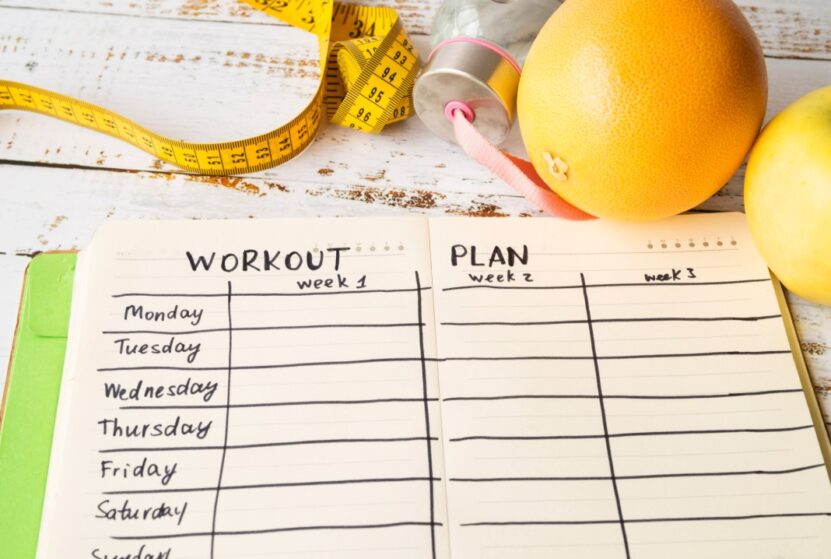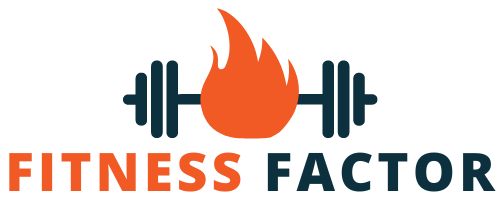Designing a workout routine often feels harder than the workout itself. You want something structured enough to keep you consistent, yet flexible enough to fit into real life with work, family, and recovery needs.
The good news is that an effective weekly workout plan does not have to be complicated. What matters is balance: pairing strength with cardio, activity with rest, and intensity with recovery.
When you strike that balance, the plan stops being a rigid schedule and becomes a rhythm you can actually follow long term.
Sample Weekly Workout Framework
Every plan should feel doable, not overwhelming. Below is a simple template you can adjust depending on your fitness level and available time.
| Day | Focus Area | Example Session |
| Monday | Strength (Upper body) | Push-ups, dumbbell presses, rows |
| Tuesday | Cardio (Moderate) | 30-min cycling or brisk walking |
| Wednesday | Strength (Lower body) | Squats, lunges, deadlifts |
| Thursday | Active Recovery | Yoga, stretching, or light swim |
| Friday | Cardio (Intervals) | Short sprints or rowing intervals |
| Saturday | Full-body Strength | Circuit of mixed compound lifts |
| Sunday | Rest or Gentle Walk | 20-30 min easy stroll |
This plan balances intensity with recovery. The sequence allows muscles to repair between strength sessions while keeping your cardiovascular system engaged throughout the week.
Why a Weekly Plan Matters More Than Motivation

Relying only on motivation sets you up for inconsistency. Motivation ebbs and flows depending on stress, energy, or the weather outside. A weekly plan works differently. It creates a framework where your workouts become part of your calendar, not an optional extra. Researchers in behavioral science have repeatedly shown that planned behavior has higher adherence than spontaneous decisions.
A workout plan essentially removes daily decision-making, leaving you with one job: show up.
Over time, that structure builds discipline, which becomes more reliable than fleeting motivation. In the same way you brush your teeth without questioning it, a consistent plan turns exercise into a routine part of your week. That is the foundation of long-term results.
Building Blocks of a Balanced Week
A complete weekly workout plan should combine several elements. Think of it like a plate of food: you need proteins, carbs, and vegetables in the right ratio. Similarly, a week of training should include:
- Strength training: 2–3 sessions to build muscle and protect joints.
- Cardio training: 2–3 sessions for heart health and stamina.
- Mobility or flexibility work: 1–2 sessions for joint range and recovery.
- Active rest: walking, light cycling, or yoga to maintain blood flow.
This structure ensures no single system in your body gets overloaded. Too much cardio without strength weakens muscles; too much lifting without cardio strains endurance. By spreading sessions wisely, you keep progress balanced, prevent injuries, and make fitness sustainable.
Digital tools now make it easier to track workouts, monitor recovery, and refine plans. But there’s also a growing concern: how to filter useful data. Just as fitness apps can optimize your sessions, tools like an AI detector are designed to help verify if training guides or online programs are genuinely human-written or AI-generated.
Tailoring to Your Goals

Not everyone trains for the same reason. Some want fat loss, others want muscle gain, and many just want to feel healthier and more energized. A good plan bends toward your personal goals without losing balance.
- For fat loss: emphasize cardio variety, maintain moderate strength, and keep nutrition in check.
- For muscle growth: increase strength frequency to 3–4 sessions, adjust cardio to low-impact forms like walking.
- For general health: keep an even split, focusing on functional movements and stamina.
Your personal preferences matter, too. If you dislike running but love cycling, lean on cycling. Consistency matters more than the perfect exercise selection.
Listening to Recovery Signals
Rest often gets overlooked, yet it is where the actual adaptation happens. Training breaks muscle fibers down; recovery builds them back stronger. Without rest, the risk of overtraining, fatigue, and injury rises. Look for cues: poor sleep, lingering soreness, irritability, or declining performance.
You can support recovery by prioritizing sleep, staying hydrated, and fueling with balanced nutrition. Active recovery days (gentle yoga, walks, mobility drills) keep blood moving without overloading the body. Think of rest not as skipping progress but as fueling it. In fact, recovery is the invisible half of your plan that makes the visible half possible.
Consistency is not about perfection. Missing one session does not break a plan; abandoning it for weeks does. The real strength comes from returning, adjusting, and continuing. A flexible mindset keeps the plan alive longer than rigid expectations ever could.
Common Mistakes to Avoid

Even with the best intentions, many plans fail because of preventable errors.
- Doing too much too soon: stacking daily high-intensity workouts often leads to burnout or injury.
- Skipping strength: focusing only on cardio overlooks muscle, which is key for metabolism and joint health.
- Neglecting rest: progress slows without proper recovery days.
- Lack of progression: repeating the same workout without increasing load, reps, or intensity stalls adaptation.
Avoiding these pitfalls is not about perfection but about awareness. A sustainable plan leaves room for progression while still respecting your limits.
How to Keep Motivation Alive
Even the best plan can fade if it feels repetitive. Keeping workouts engaging requires a mix of strategies:
- Rotate exercises every 4–6 weeks to challenge your body.
- Train with a friend for accountability and social support.
- Track progress with a simple journal or app to see small wins.
- Reward yourself with non-food milestones, like new gear or a weekend activity.
Variety does not mean chaos. Small changes, like new exercise variations, different cardio modes, or shifting session times, refresh your mindset without losing structure.
A Plan That Fits Your Life
The most effective workout plan is not the one with the fanciest exercises, but the one you can stick with. It should feel like a natural part of your week, not a constant uphill battle. Start with a simple structure, respect recovery, tailor sessions to your goals, and adjust as your body adapts.
By grounding your plan in balance and consistency, you create something sustainable, a routine that supports not just short-term results but long-term health, confidence, and strength.

